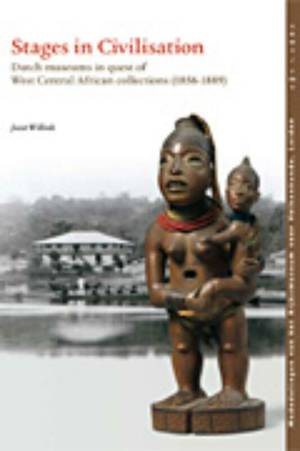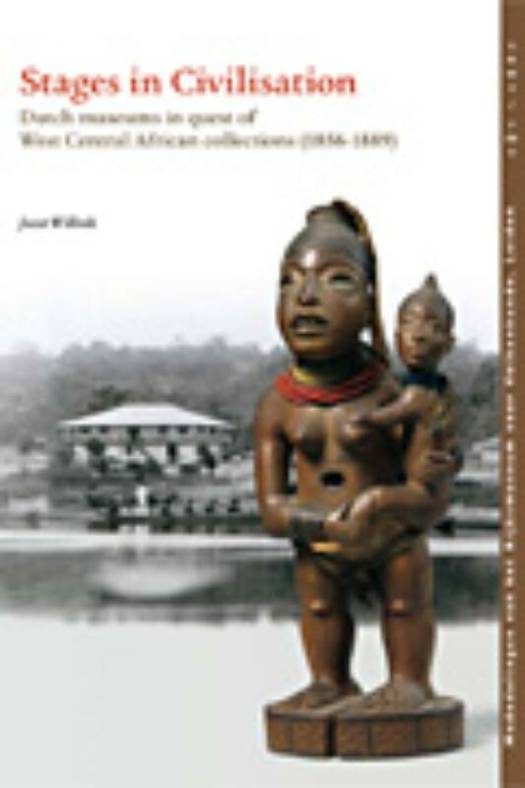
Door een staking bij bpost kan je online bestelling op dit moment iets langer onderweg zijn dan voorzien. Dringend iets nodig? Onze winkels ontvangen jou met open armen!
- Afhalen na 1 uur in een winkel met voorraad
- Gratis thuislevering in België vanaf € 30
- Ruim aanbod met 7 miljoen producten
Door een staking bij bpost kan je online bestelling op dit moment iets langer onderweg zijn dan voorzien. Dringend iets nodig? Onze winkels ontvangen jou met open armen!
- Afhalen na 1 uur in een winkel met voorraad
- Gratis thuislevering in België vanaf € 30
- Ruim aanbod met 7 miljoen producten
Zoeken
Stages in Civilisation
Dutch museums in quest of West Central African collections (1856-1889)
R.J. Willink
€ 54,95
+ 109 punten
Omschrijving
The first Dutch ethnographic collections from West Central Africa were formed in the late nineteenth century. Between 1876 ? 1889, thanks to the ?on the spot' presence of the Afrikaansche Handelsvereeniging (the African Trading Association) and its successor, the Nieuwe Afrikaansche Handelsvennootschap (the New African Trading Company), several thousands of ethnographic items were acquired by various Dutch museums. After the establishment of the Congo Free State in 1885, however, it became more difficult to collect directly objects from this part of Africa.
This study is the first extensive enquiry into the collecting of Africana by late nineteenth century Dutch museums. These collecting campaigns took place during the last days of the great African explorations, notably by Livingstone and Burton from Great Britain, Du Chaillu and Stanley from the USA, and Bastian from Germany. These travellers had outspoken ideas about African morals and customs and about the meaning and significance of material objects. The author of this study argues that the acquisition history of Africana in Dutch museums corresponds directly with the beliefs of the great explorers and with the dominant evolutionary theories that were then current in the Western world. These stipulated that people could be placed in a hierarchy of races and sub-races. Within this context, the author compares the late nineteenth century Dutch collections in the museums in Leiden, Amsterdam and Rotterdam to similar collections in the Museum für Völkerkunde, Berlin; the Musée de Trocadéro, Paris; the British Museum, London, and the Sociedade de Geographía in Lisbon.
This study is the first extensive enquiry into the collecting of Africana by late nineteenth century Dutch museums. These collecting campaigns took place during the last days of the great African explorations, notably by Livingstone and Burton from Great Britain, Du Chaillu and Stanley from the USA, and Bastian from Germany. These travellers had outspoken ideas about African morals and customs and about the meaning and significance of material objects. The author of this study argues that the acquisition history of Africana in Dutch museums corresponds directly with the beliefs of the great explorers and with the dominant evolutionary theories that were then current in the Western world. These stipulated that people could be placed in a hierarchy of races and sub-races. Within this context, the author compares the late nineteenth century Dutch collections in the museums in Leiden, Amsterdam and Rotterdam to similar collections in the Museum für Völkerkunde, Berlin; the Musée de Trocadéro, Paris; the British Museum, London, and the Sociedade de Geographía in Lisbon.
Specificaties
Betrokkenen
- Auteur(s):
- Uitgeverij:
Inhoud
- Aantal bladzijden:
- 380
- Taal:
- Engels
- Reeks:
- Reeksnummer:
- nr. 149
Eigenschappen
- Productcode (EAN):
- 9789057891137
- Verschijningsdatum:
- 1/02/2007
- Uitvoering:
- Paperback
- Afmetingen:
- 165 mm x 241 mm
- Gewicht:
- 734 g

Alleen bij Standaard Boekhandel
+ 109 punten op je klantenkaart van Standaard Boekhandel
Beoordelingen
We publiceren alleen reviews die voldoen aan de voorwaarden voor reviews. Bekijk onze voorwaarden voor reviews.











